I found this interesting article on the inter-tubes the other day and thought that I would share it. It is about a disused site from the Soviet era Troposcatter communication system called “SEVER.” There are many more pictures of equipment including MUX, transmitters, antennas, buildings, etc, at that link.
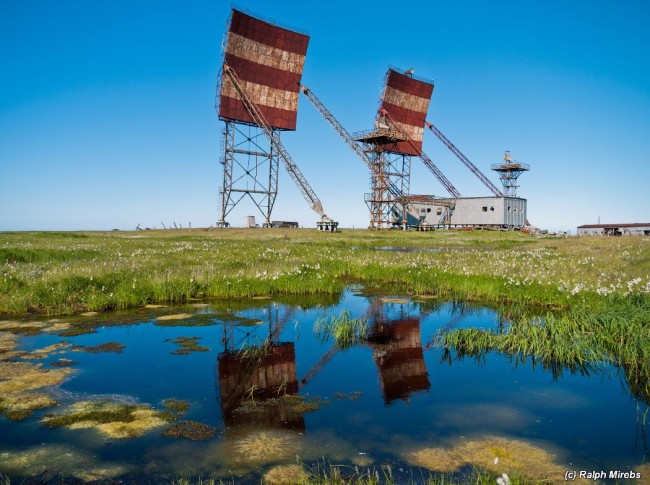
Like many of its counterparts in the US, this system has quite a bit of information available, including an interesting blog and associated web site which has lots of interesting information. Some of it is in Russian, which mine is a little bit rusty, but here is what I could find out:
This is site 6/60, call sign Poloska and is located in Amderma, Nenets Autonomous okrug. That is way up north along the Barents Sea. This site was in use from about 1965 until 2001 when it was closed down. It communicated with site 5/60, which was 264 km away.
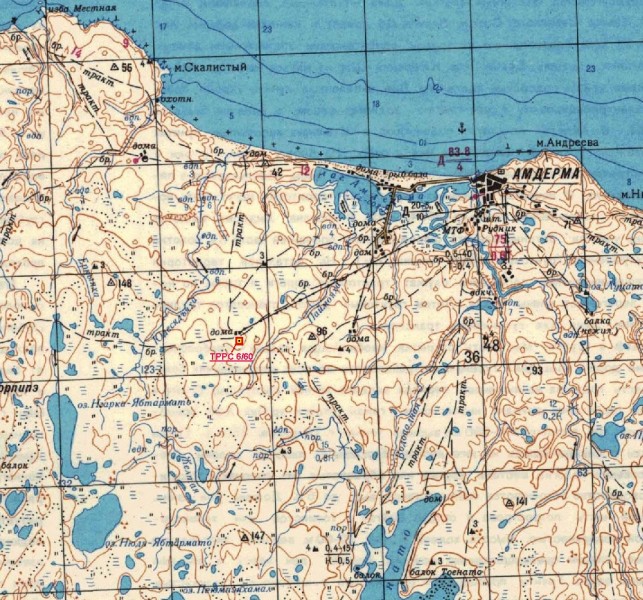
Troposcatter was used widely before satellites came into availability. It used decimeter wavelengths (approximately 2 GHz) and lots of power with very high gain antennas. Basically, the earth and the troposphere were used as reflectors, creating a type of duct. It is noted the SEVER and the GOREEZONT (HORIZONT) systems used both space and frequency diversity as a part of their system. Frequency diversity means that there were as many as five identical signals transmitted on different frequencies at the same time. Space diversity means that two or more transmit and receive antennas were used, as can be seen in the picture. This site was run by the military but would have likely carried civilian communications as well.
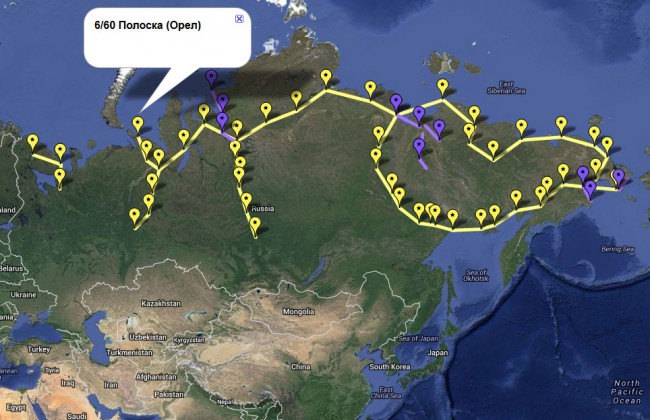
Basically, it was a way to maintain communications across vast distances when wired or microwave systems were not practical or possible. The US used such systems on the DEW line and across the Pacific Ocean between Hawaii and Okinawa. I remember the big Troposcatter dishes up on the hill behind the Navy housing area above Agana.
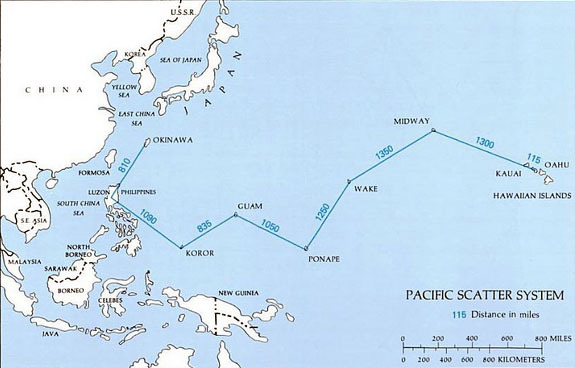
These systems were massive and expensive to build, operate and maintain. From the looks of the pictures, site 6/60 generated all of its electricity with diesel generator sets. Fiber optic cable is an improvement of several orders of magnitude over this technology.
It is always interesting to see how things used to be done and give thanks to those that went along before us. Last night I was grumbling about the network latency when watching a youtube video. It was terrible, but in retrospect, not really that bad.




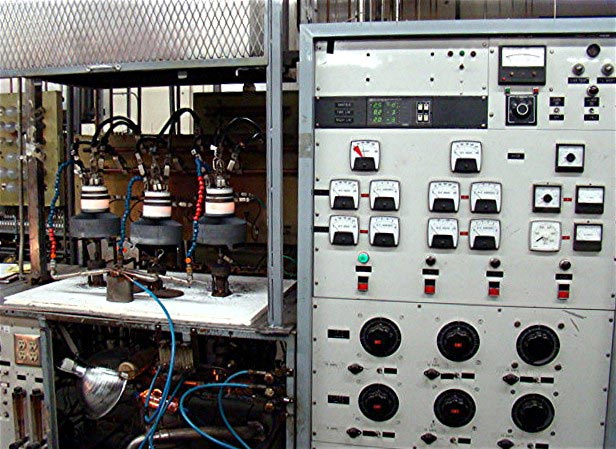
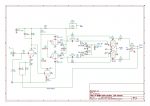
Interesting to see! Another example was used during the cold war between the western sectors of Berlin and the rest of the western country. They used 2 over 1100ft (approx 360m) high towers to establish a telephone and communication system without the need of equipment on eastern-german ground (see here: http://en.wikipedia.org/wiki/Richtfunkstelle_Berlin-Frohnau)
This is actually very interesting. The site link “Sever” has very good pictures and when you use google chrome browser it will translate the page. Those old school circuit boards are a thing of beauty. It’s a shame people have already savaged the place.
I, these old systems seem like dinosaurs from a bygone era compared with today’s tech. Makes me wonder what they will be saying about us in 30-40 years.
Jeffery, It seems that the site has been ransacked and most things of value have been taken; copper waveguide, generators, etc. There does seem to be quite a bit of copper wire left, or at least what looks like copper wire, it could be something else.
Hello I was stationed in the Air Force on Okinawa in the late 50’s and was assigned to AFRTS. I visited one of these stations and at the time they called it Scatter wave propagation. Very interesting in that there was absolutely NO background noise…better that FM! Kirt KK7QT
Hi Paul,
Read the Tropo stuff. I have a friend who just returned from working on a system that operates between Labrador and Quebec. You can see it using Google Earth and Tropo.kmz
He sent a few pics. 2 of them are of the antennas – one showing the waveguide and feed and also a shot of one of the amplifiers running. 1.61 kW into a 45 dB gain antenna makes for some decent EiRP!
http://users.burlingtontelecom.net/~n1jez@burlingtontelecom.net/images/Antenna_feed.jpg
http://users.burlingtontelecom.net/~n1jez@burlingtontelecom.net/images/Antenna.jpg
http://users.burlingtontelecom.net/~n1jez@burlingtontelecom.net/images/Amp.jpg
They transmit data – 2 E1 channels.
73,
Mike, N1JEZ
Mike, that is cool. I though most of these systems were replaced years ago, I am going to do something about White Alice in the coming weeks.
The system in the Pacific is not Tropo Scatter but Ionospheric Scatter which operates on VHF frequencies not microwave frequencies. The System was installed by Page Communications Engineers in the early 1969’s. Extensive Tropo systems were installed in Japan,Vietnam and Thailand by the Army. I was the chief engineer on these projects. See my articles on my web page, MervNorton.com
Merv Norton
See this as well…
https://en.wikipedia.org/wiki/North_Atlantic_Radio_System
https://en.wikipedia.org/wiki/Tropospheric_scatter
In 1965/66 the Army on Okinawa had a tropo link they said was around 800 MHz between Okinawa and Luzon Island in the Philippines. I know about it because my duty station, the Navy DF site at Hanza (Torii Station), had a circuit that rode that link. I was Comm Maintenance Shop Supervisor
While I was there, they “upgraded” to a digital mux. It was nothing but trouble since my crypto gear could NOT get timing from the Army. The mux did not buffer my send data, so my bits had to arrive when the mux sampled my channel. An Army tech coached me over the phone and we got “close,” meaning fewer extra crypto resets but still too many.
We had to reset the KW-26 crypto multiple times a day after the damned “upgrade.” I had an idea for getting us closer to the exact timing of the mux, using the receive signal timing. I never got a chance to try it because the Chief put the kibosh on my adjusting the transmitter unit’s clock my way. I don’t know what he thought I might break. I was the one who’d had the school, not he.
I worked in Palau at an Ionic Scatter relay station in 1966-67.
Ionospheric Scatter